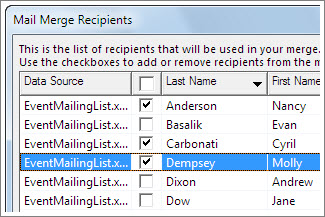Data Merge
Summary
MERGE Data-Set 1 Data-Set 2 BY Common Variable Following is the description of the parameters used −. Data-set1,Data-set2 are data set names written one after another. Common Variable is the variable based on whose matching values the data sets will be merged. Let us understand data merging with the help of an example.
- Feb 11, 2019 To merge two data sets in Stata, first sort each data set on the key variables upon which the merging will be based. Then, use the.merge command followed by a list of key variable(s) and data set(s). In Stata version 11 and later: merge 1:1 varlist using filename , options.
- In this step-by-step tutorial, you'll learn three techniques for combining data in Pandas: merge,.join, and concat. Combining Series and DataFrame objects in Pandas is a powerful way to gain new insights into your data.
- Merge, join, concatenate and compare¶. Pandas provides various facilities for easily combining together Series or DataFrame with various kinds of set logic for the indexes and relational algebra functionality in the case of join / merge-type operations.
Combines multiple input datasets into a single, new output dataset. This tool can combine point, line, or polygon feature classes or tables.
Use the Append tool to combine input datasets with an existing dataset.
Usage

Use this tool to combine datasets from multiple sources into a new, single output dataset. All input feature classes must be of the same geometry type. For example, several point feature classes can be merged, but a line feature class cannot be merged with a polygon feature class.
Tables and feature classes can be combined in a single output dataset. The output type is determined by the first input. If the first input is a feature class, the output will be a feature class,; if the first input is a table, the output will be a table. If a table is merged into a feature class, the rows from the input table will have null geometry.
All fields in the output dataset and the contents of those fields can be controlled using the Field map.
- To change the field order, select a field name and drag it to the preferred position.
- The default data type of an output field is the same as the data type of the first input field (of that name) it encounters. You can manually change the data type at any time to any other valid data type.
- The following merge rules are available: first, last, join, sum, mean, median, mode, minimum, maximum, standard deviation, and count.
- When using the Join merge rule, you can specify a delimiter such as a space, comma, period, dash, and so on. To use a space, make sure the pointer is at the start of the input box and press the Spacebar once.
- You can specify the start and end positions of text fields using the format option.
- Do not perform standard deviation on a single input because values cannot be divided by zero, so standard deviation is not a valid option for single inputs.
This tool will not split or alter the geometries from the input datasets. All features from the input datasets will remain intact in the output dataset, even if the features overlap. To combine, or planarize, feature geometries, use the Union tool.
If feature classes are being merged, the output dataset will be in the coordinate system of the first feature class in the Input Datasets list, unless the Output Coordinate System geoprocessing environment is set.
Microsoft excel word and powerpoint. This tool does not support annotation feature classes. Use the Append Annotation Feature Classes tool to combine annotation feature classes.
This tool does not support raster datasets. Use the Mosaic To New Raster tool to combine multiple rasters into a new output raster.
Syntax
| Parameter | Explanation | Data Type |
[inputs,..] | The input datasets that will be merged into a new output dataset. Input datasets can be point, line, or polygon feature classes or tables. Input feature classes must all be of the same geometry type. Tables and feature classes can be combined in a single output dataset. The output type is determined by the first input. If the first input is a feature class, the output will be a feature class; if the first input is a table, the output will be a table. If a table is merged into a feature class, the rows from the input table will have null geometry. | Table View |
The output dataset that will contain all combined input datasets. | Feature Class;Table | |
field_mappings | Controls which attribute fields will be in the output. By default, all fields from the inputs will be included. Fields can be added, deleted, renamed, and reordered, and you can change their properties. Merge rules allow you to specify how values from two or more input fields are merged or combined into a single output value. Istumbler review. There are several merge rules you can use to determine how the output field will be populated with values.
In Python, you can use the FieldMappings class to define this parameter. | Field Mappings |
add_source | Specifies whether source information will be added to the output dataset in a new text field, MERGE_SRC. The values in the MERGE_SRC Quickbooks pro 2012 download best pricenewpride. field will indicate the input dataset path or layer name that is the source of each record in the output.
| Boolean |
Code sample
Data Merge Indesign Multiple Records
Merge example 1 (Python window)The following Python window script demonstrates how to use the Merge function.
Merge example 2 (stand-alone script)Use the Merge function to move features from two street feature classes into a single dataset.
Environments

Licensing information
Excel Data Merge
- Basic: Yes
- Standard: Yes
- Advanced: Yes

Related topics
